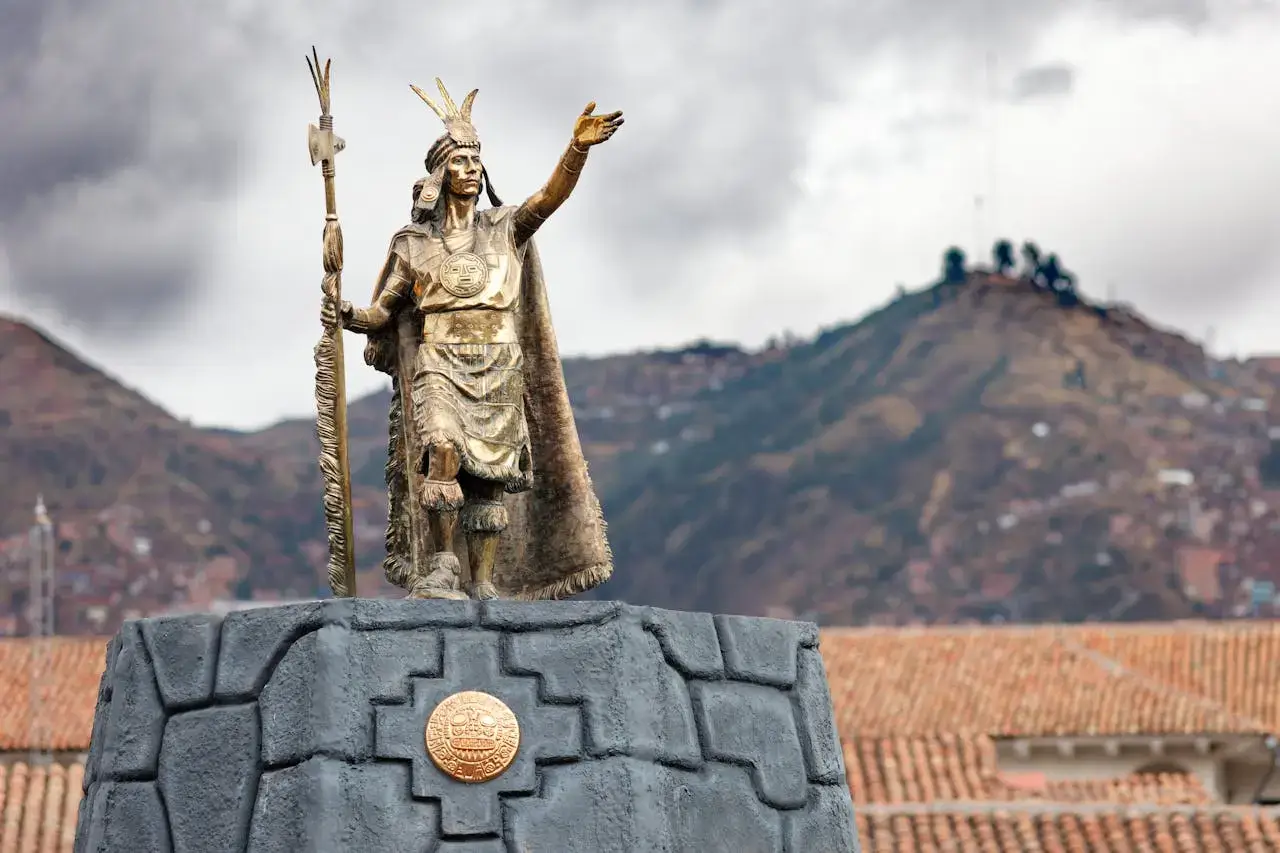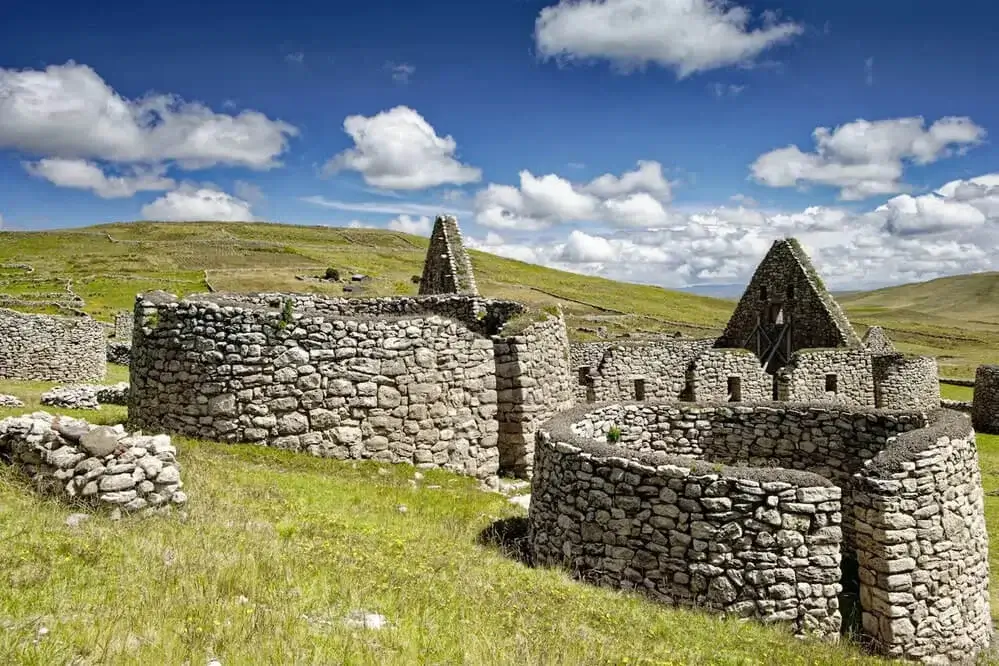Curious about the Inca civilization? Dive deep into the wonders of Inca history with Andean Travel Experience. While many ancient civilizations existed thousands of years ago, the Incas obtained popularity relatively recently in human history.
The peak of the Inca Empire coincided with Johannes Gutenberg's invention of the printing press and the European settlement in North America. This blog will look at 15 fascinating facts about the Incas, including their incredible achievements and the reasons for their quick rise to power.
The Inca civilization, known for its impressive achievements in architecture, agriculture, and social organization, is one of the most fascinating topics in pre-Columbian history. Here, we explore 15 fascinating and detailed facts about the Incas, ranging from their daily practices to their monumental achievements.
15 Fascinating Facts about the Greatest Civilization of America
1. Is it "Inca" or "Inka"?
While both spellings exist in English, "Inca" is more widely accepted academically. Early Spanish chroniclers who documented the civilization used the "C" spelling. Because the Incas had no written language, this spelling became the norm. The name "Inca" means "ruler" or "lord" in Quechua, the Incas' language.
2. The Incas had no written language.
Despite their advances in other areas, the Incas did not create a writing system. They used khipus, knotted strings that recorded numerical data, and tocapus, woven symbols in garments that could represent important information or heraldry. These tools enabled the Incas to keep detailed records on agricultural production, census data, and even military logistics.
3. The title "Inca" was reserved for the king.
The term "Inca" was reserved only for the king and his close relatives. Qosqorunas were the common name for Cusco residents, whereas people from other regions were given names based on their origin. The Inca king, also known as Sapa Inca, was revered as a divine ruler and was thought to be the son of the sun god Inti.
4. The Spaniards Called Them "Orejones"
The Inca nobility wore large gold and silver earrings that stretched their earlobes, earning them the nickname Orejones (big ears) among Spaniards. These adornments were not just for decoration; they signified the wearer's high status within the society. The larger and more elaborate the earrings, the higher the social rank. The larger and more ornate the earrings, the higher the social status.
5. Advanced Cranial Surgery.
The Incas used preparation, a type of advanced cranial surgery. This knowledge was passed down from earlier cultures such as the Paracas, who used gold and silver tools to perform these operations. Trepanation involved removing a portion of the skull to treat injuries or illnesses, and many patients miraculously survived these procedures, as evidenced by bone regrowth near the surgical sites.
6. No Currency, Better Bartering
Instead of coins, the Incas used barter to exchange goods like maize, potatoes, and llamas. This system reflected communal and religious values, with precious metals used for sacred rather than commercial purposes. The Inca economy was based on reciprocity and redistribution, with the state collecting and redistributing goods to ensure that everyone had what they needed.
7. Ayni: Service as payment.
Ayni was a reciprocal system in which people assisted one another with agricultural and construction tasks. This system strengthened community bonds and promoted mutual cooperation. Ayni was not only an economic practice, but also a social and moral one, emphasizing the value of community unity and collective well-being.
8. Instead of using the wheel, they employed llamas.
The Incas did not use wheels for transportation, instead relying on llamas to carry heavy loads. Llamas were essential to Inca culture, providing wool, meat, and serving as pack animals. They used lubricated logs to move large stone blocks in their constructions. This method enabled them to transport massive stones across rough terrain to construct their impressive structures.
9. 30,000 miles of well-paved roads.
The Inca road network, known as Qhapaq Ñan, connected the empire across 30,000 miles of mountains, valleys, and jungles. In terms of extension and construction, this network rivaled the Romans'. Roads facilitated the movement of armies, goods, and information.
10. Chasquis, the Inca Messenger System.
The Chasquis were messengers who covered long distances to deliver messages and goods. They used relay stations and tambos (storage houses) to rest and resupply, allowing for rapid and efficient communication throughout the empire. Chasquis were highly trained and able to travel long distances quickly, ensuring that news and orders from the Sapa Inca reached even the most remote parts of the empire.
11. Mostly vegetarian diet
The Inca diet consisted primarily of vegetables and Andean cereals such as potatoes, maize, and quinoa. They cultivated hundreds of potato varieties and developed advanced agricultural techniques, such as terrace farming, to increase yields. Meat, such as cuy (guinea pig) and cecina (dried meat), was eaten on special occasions. Their diet was nutritious and well-suited to the Andes' high altitude environment.
12. Never Worried about Famine.
Despite facing natural disasters, the Incas stored food in tambos to ensure a steady supply during times of scarcity. These storehouses, strategically placed in high areas, housed dried potatoes, maize, and dried meat. This system of surplus storage enabled the Incas to efficiently manage food resources and keep their population fed even during droughts or crop failures.
13. Three World Levels of Beliefs
Inca cosmology consisted of three levels: Uku Pacha (underworld), Kay Pacha (earthly world), and Hanan Pacha (heavenly world). These levels were interconnected, reflecting their profound spirituality. The Incas believed that their earthly actions determined their fate in the afterlife, and that the deities who lived in Hanan Pacha guided their daily lives and agricultural practices.
14. Their Buildings Aligned with Their Cosmology.
The Inca built temples and fortresses in accordance with astronomical events and religious beliefs. They built on mountain peaks and high points to get closer to their deities and the Hanan Pacha. Many Inca sites, including Machu Picchu and Sacsayhuamán, have structures that correspond to solstices and equinoxes, demonstrating an advanced understanding of astronomy.
15. Today, Some Live in the Inca Style.
Many modern Andean communities continue to practice Inca traditions, speaking Quechua and celebrating ancient festivals such as Inti Raymi (Sun Festival). They also continue to perform thanksgiving rituals for Pachamama (Mother Earth). These practices preserve the Incas' cultural heritage and provide insight into this remarkable civilization's long-term legacy.

Additional Interesting Facts
Marital Customs: Men were required to marry at the age of 20, and those who did not were assigned a wife. Leaders could have multiple wives, and marriages were designed to strengthen political alliances and social ties.
Cuy (roasted guinea pig) was a delicacy during Inca times and is still a popular dish in many parts of Peru today. It is frequently prepared for special events and festivals, demonstrating its cultural significance.
Frequently Asked Questions About the Inca Civilization
1. Who were the Incas?
The Incas were a powerful Andean civilization that developed one of the largest and most sophisticated empires in pre-Columbian America. Known for their advanced engineering, agriculture, and social organization, they ruled from their capital in Cusco until the Spanish conquest in the 16th century.
What does the word “Inca” mean?
“Inca” means ruler or lord in Quechua, the native language of the Andes. Originally, the title referred only to the emperor and his royal lineage, not the entire population.
Did the Incas really have no written language?
Correct. The Incas did not develop a written script. Instead, they used khipus knotted strings to record numbers, data, and important information. They also used tocapus, symbolic designs on textiles, likely representing identity or status.
How did the Incas communicate over long distances?
They used the Chasqui messenger system, highly trained runners who relayed messages across the empire’s 30,000-mile road network using relay stations. Messages could travel hundreds of kilometers in a single day.
What made the Inca road system so impressive?
The Qhapaq Ñan was an extensive and well-engineered network across mountains, deserts, and jungles. Built with stone, stairs, and suspension bridges, it connected all corners of the empire rivaling even the Roman road system.
What did the Incas eat?
Their diet was mostly vegetarian and based on Andean staples like potatoes, maize, quinoa, and legumes. Meat such as cuy and dried alpaca was eaten during ceremonies or special occasions.
What were the main Inca beliefs?
Their worldview was built around three realms:
- Hanan Pacha: the upper world
- Kay Pacha: the earthly world
- Ukhu Pacha: the inner/underworld
They worshiped deities such as Inti (the Sun God) and Pachamama (Mother Earth).
Are Inca traditions still alive today?
Yes. Many Andean communities continue to speak Quechua, celebrate festivals like Inti Raymi, practice traditional agriculture, and maintain rituals honoring Pachamama. Their lifestyle preserves the heritage of Inca culture.
What are the most famous Inca sites to visit in Peru?
Top Inca destinations include:
Each site showcases different aspects of Inca engineering, astronomy, and culture.
The Inca civilization has a rich history and culture, and many aspects remain to be discovered. From their impressive engineering feats to their communal practices, the Incas left a lasting legacy that is still reflected in Andean communities' traditions. Exploring these facts allows us to not only better understand their world, but also to appreciate the cultural heritage that has survived to the present day.
A trip to Peru provides a one-of-a-kind opportunity to connect with this fascinating civilization and learn more about its history and legacy. From walking the Inca Trail to visiting the majestic Machu Picchu, the Inca heritage continues to captivate visitors from all over the world. Furthermore, the rich history of cities such as Cusco and the sacred Valley of the Incas offers an immersive experience into one of the Americas' greatest civilizations.
Understanding the complexities of Inca society provides insight into how they built a cohesive, prosperous, and long-lasting empire in one of the most difficult environments on Earth. Their achievements in engineering, agriculture, and social organization demonstrate their ingenuity and resilience. The Incas' legacy is an important part of world history, teaching valuable lessons about sustainability, community, and cultural richness that are still relevant today.
Experience the wonders of the Inca civilization firsthand and uncover the incredible legacy of one of history’s greatest empires. Immerse yourself in Peru’s rich cultural heritage by visiting Cusco, walking the legendary Inca Trail, or marveling at the iconic Machu Picchu. Dive into the vibrant traditions and stories that continue to resonate in Andean communities today.



